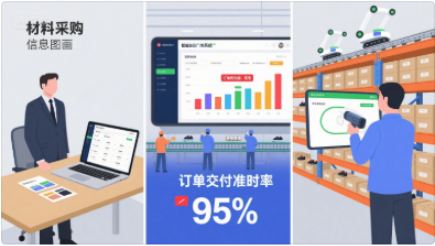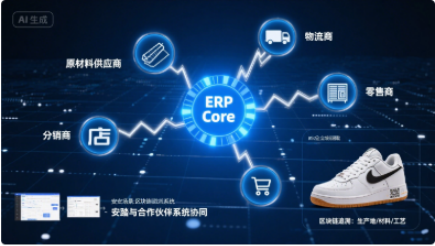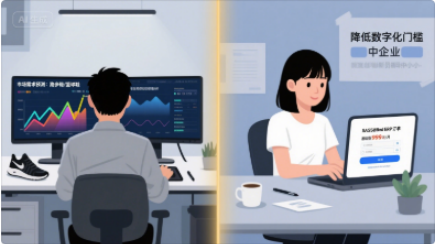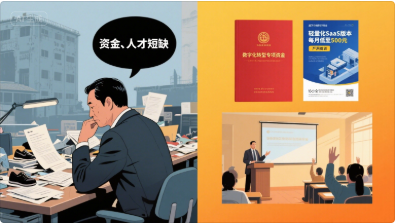Driven by modular integration and process optimization, footwear ERP empowers supply chain collaborative innovation
Under the wave of digitalization, China's footwear industry is accelerating its transformation and upgrading through enterprise resource planning (ERP) systems, promoting supply chain collaboration through modular integration and process optimization, and enhancing competitiveness in the global market through innovation empowerment. By 2025, the market size of China's footwear system software has reached 20 billion yuan, and is expected to exceed 40 billion yuan by 2030. ERP, as the core support for the digital transformation of the footwear industry, is demonstrating enormous development potential and transformative power. 
Currently, local ERP vendors have taken a dominant position in the market, providing customized solutions for footwear enterprises. For example, manufacturers such as Yonyou, Kingdee, and Baima have integrated shoe sample design, production planning, inventory control, and other modules into their ERP systems to achieve seamless data flow and sharing based on the characteristics of the footwear industry. A sports shoe factory in Wenzhou, by adopting a white code ERP system and integrating multiple core modules, has successfully increased production efficiency by 30% and reduced the defect rate by 45%, demonstrating the significant effectiveness of modular integration in optimizing the production process of the footwear industry. 
Process optimization is a key link in the application of footwear ERP. From raw material procurement to product sales, the ERP system precisely controls every step through intelligent process management. In production management, AI and machine learning technologies are utilized to achieve intelligent scheduling, automatically generating production plans based on multiple parameters such as order priority and equipment capacity. For example, the intelligent scheduling engine of Wanda Bao ERP improves the on-time delivery rate of orders to 95%. In terms of inventory management, real-time monitoring of inventory levels, setting safety stock warnings, reducing inventory backlog and stockout risks, and improving capital turnover. 
Supply chain collaboration is an important direction for the future development of footwear ERP. With the intensification of market competition, there is an increasingly urgent need for collaboration between footwear companies and their partners such as suppliers and logistics providers. The ERP system utilizes technologies such as cloud computing, the Internet of Things, and blockchain to build a digital supply chain network. For example, Nike uses blockchain technology to assign a unique ID to each pair of shoes, achieving full traceability of raw material sources and production processes, and improving supply chain transparency. Domestic enterprises such as ANTA are also actively exploring the integration of ERP systems with suppliers and logistics providers to achieve real-time information sharing, quickly respond to market changes, and optimize the operational efficiency of the entire supply chain. 
Innovation empowerment runs through the development process of footwear ERP. On the one hand, technological innovation continues to expand the functional boundaries of ERP, such as the intelligent demand forecasting function. Through the analysis of market big data, market demand can be predicted in advance to guide enterprise production and inventory decisions; On the other hand, business model innovation is also being achieved through ERP, such as the popularization of SaaS models, which have lowered the digital threshold for small and medium-sized enterprises. By subscribing to services, enterprises can obtain ERP functions on demand and quickly achieve digital transformation. 
However, the promotion and deepening application of shoe ERP have not been smooth sailing. Some small and medium-sized shoe companies have a low acceptance of ERP due to a shortage of funds and technical talents. In response, the government has introduced special subsidy policies to encourage enterprises to carry out digital transformation, and ERP vendors have also launched "lightweight" SaaS versions to reduce the cost of enterprise use. At the same time, industry associations actively organize training to enhance enterprises' awareness and application capabilities of ERP. 
Looking ahead to the future, driven by modular integration, process optimization, supply chain collaboration, and innovation empowerment, China's footwear ERP will continue to iterate and upgrade, helping footwear enterprises move towards the mid to high end of the global value chain and achieve sustainable development. 





